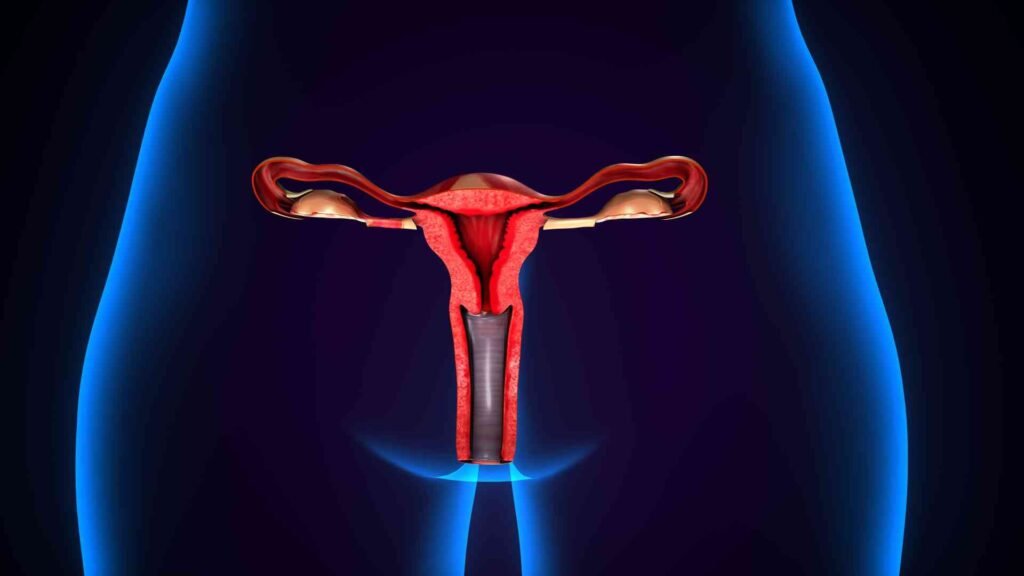How Vaginal and Uterine Microbiome Affect Conception?
When couples struggle with fertility, the first things that come to mind are hormone levels, ovulation timing, sperm quality, or structural issues in the reproductive system. But in recent years, science has shined a spotlight on an overlooked player: the microscopic world of bacteria living inside the female reproductive tract. Yes, we’re talking about the Vaginal and Uterine Microbiome.
These microbial communities don’t just hang around without purpose. They have the potential to make or break conception, influence pregnancy outcomes, and even affect the health of a baby long after birth. Let’s break this down in a friendly, easy-to-digest way so you can see just how much these tiny organisms matter.

Understanding the Vaginal and Uterine Microbiome
We all know the gut is filled with microbes that affect digestion, immunity, and even mood. Similarly, the female reproductive system houses its own microbial ecosystems.
- The vaginal microbiome is primarily dominated by Lactobacillus species, which help keep the environment acidic and hostile to harmful pathogens.
- The uterine microbiome was once thought to be sterile, but research now shows it too harbors its own community of bacteria, albeit in smaller numbers.
Together, these two ecosystems create a delicate balance that protects against infections and maintains optimal conditions for conception and pregnancy.
Why the Vaginal and Uterine Microbiome Matters for Fertility?
Think of these microbiomes as gatekeepers. When the balance tips in favor of “good” bacteria, the reproductive tract is primed for conception. But when harmful or opportunistic microbes take over, problems can arise:
- Impact on sperm survival – A healthy vaginal environment allows sperm to swim freely toward the uterus. In contrast, inflammation or infection triggered by imbalanced microbes can damage sperm cells or block their path.
- Egg implantation – The uterine lining needs to be receptive for an embryo to implant. Disruptions in the uterine microbiome can cause low-grade inflammation that makes implantation more difficult.
- Immune regulation – The body must strike a balance between protecting against infection and tolerating a growing embryo. The microbiome helps fine-tune this immune response.
So, when conception feels out of reach despite “normal” test results, looking deeper into microbial balance can sometimes explain the mystery.
Signs the Microbiome Might Be Off-Balance
Not everyone with a disrupted microbiome will notice symptoms, but here are some subtle signs that things may not be optimal:
- Frequent vaginal infections or bacterial vaginosis (BV)
- Unexplained pelvic inflammation
- Pain during intercourse
- Recurrent miscarriages or early implantation failures during IVF

While these symptoms don’t guarantee a problem with the vaginal or uterine microbiome, they’re worth discussing with a healthcare provider.
The Role of Lactobacillus: Fertility’s Best Friend
Lactobacillus deserves a special mention here. These friendly bacteria produce lactic acid, keeping the vaginal pH low (around 3.5 to 4.5), which discourages harmful bacteria from thriving. They also produce hydrogen peroxide and bacteriocins—substances that inhibit infection-causing microbes.
In studies, women with a Lactobacillus-dominant vaginal microbiome have been shown to have higher rates of successful conception, both naturally and during assisted reproductive treatments like IVF. It’s a reminder that sometimes, the simplest biological players make the biggest difference.
How the Uterine Microbiome Affects Implantation?
While less studied than the vaginal environment, the uterine microbiome is gaining attention. Researchers have found that certain bacterial profiles in the uterus are linked to better implantation rates and healthier pregnancies.
For example, women whose uterine microbiomes are rich in Lactobacillus often experience smoother embryo implantation during IVF. Conversely, the presence of bacteria like Gardnerella, Atopobium, or Streptococcus can disrupt the uterine environment and lead to failed cycles or miscarriages.
This is why some fertility specialists are beginning to test the uterine microbiome before transferring embryos—a proactive step that could save emotional stress and time.
Lifestyle and Environmental Factors That Influence Microbiome Health
Like all microbial ecosystems, the vaginal and uterine microbiome doesn’t exist in isolation. Many lifestyle and environmental factors can shape it, such as:
- Antibiotic use – While sometimes necessary, antibiotics can wipe out beneficial bacteria, creating space for less desirable microbes.
- Diet – A nutrient-rich diet supports overall microbial health. Diets high in processed foods and sugar may encourage harmful bacterial growth.

- Stress – Chronic stress can alter immune responses, which in turn affect microbial balance.
- Sexual activity – Semen has its own microbiome, and frequent changes in sexual partners may influence vaginal microbial communities.
- Hygiene products – Overuse of scented washes or harsh cleansers can disrupt the vaginal microbiome.
Microbiome Testing in Fertility Clinics
With advances in technology, it’s now possible to test the microbial composition of both the vagina and uterus. These tests often involve:
- Vaginal swabs
- Endometrial biopsies (for the uterus)
- Genetic sequencing to identify bacterial species present
The results can help fertility specialists tailor treatment, such as recommending probiotics, antibiotics, or changes in lifestyle before attempting conception or IVF.
Can Probiotics Help?
The idea of “seeding” the reproductive tract with beneficial bacteria has become popular. While the research is still evolving, early studies suggest that oral or vaginal probiotics containing Lactobacillus strains may help restore microbial balance.
That said, not all probiotics are created equal. Strains matter, and effectiveness can vary. It’s best to discuss with a healthcare provider rather than self-supplementing, especially when trying to conceive.
What This Means for Assisted Reproductive Technology (ART)?
Couples undergoing IVF or IUI face enough stress already. Unfortunately, an imbalanced microbiome can reduce success rates, leading to failed cycles or repeated embryo transfer attempts.
By addressing the vaginal and uterine microbiome before treatment, fertility specialists can improve the likelihood of positive outcomes. Some clinics are even incorporating microbiome profiling as part of their pre-IVF workup, giving couples more information and control.

Pregnancy and Beyond: The Long-Term Impact
The story doesn’t end at conception. A healthy microbiome can also support pregnancy and even shape a newborn’s health. For instance:
- Reduced risk of preterm birth – Balanced microbes reduce inflammation that could trigger early labor.
- Protection against infections – A strong microbial community helps shield both mother and baby.
- Seeding the newborn’s microbiome – During vaginal birth, a baby is exposed to its mother’s microbiome, which helps kickstart their immune system.
So, caring for these microbial communities is about more than just getting pregnant—it’s about setting up a healthier future.
Practical Tips to Support a Healthy Microbiome
Here are some approachable steps for maintaining balance:
- Prioritize nutrition – Eat plenty of fiber, fermented foods, and diverse fruits and vegetables.
- Avoid unnecessary antibiotics – Use them only when prescribed.
- Choose gentle hygiene products – Stick to unscented, pH-friendly washes.
- Manage stress – Mind-body practices like yoga, meditation, or simply walking can help.
- Regular checkups – Don’t ignore unusual symptoms. Early detection can prevent bigger problems later.
The Future of Fertility and the Microbiome
The study of the Vaginal and Uterine Microbiome is still in its early stages, but the implications are massive. We may soon see personalized fertility treatments that go beyond hormones and egg quality, targeting microbial balance as a key factor.
Imagine a world where before starting IVF, your doctor runs a simple microbiome test, prescribes targeted probiotics or treatments, and significantly increases your chances of success. That future may not be far off.

Final Thoughts
When we think about fertility, it’s easy to focus only on eggs, sperm, and timing. But conception is a symphony of many players, and the Vaginal and Uterine Microbiome is emerging as one of the most important sections in that orchestra.
By supporting microbial health, couples may boost their chances of conceiving naturally or through assisted methods. More importantly, they lay the groundwork for a healthier pregnancy and baby.
If you’re on a fertility journey, don’t overlook these tiny but mighty allies. After all, sometimes the smallest organisms have the biggest impact.



